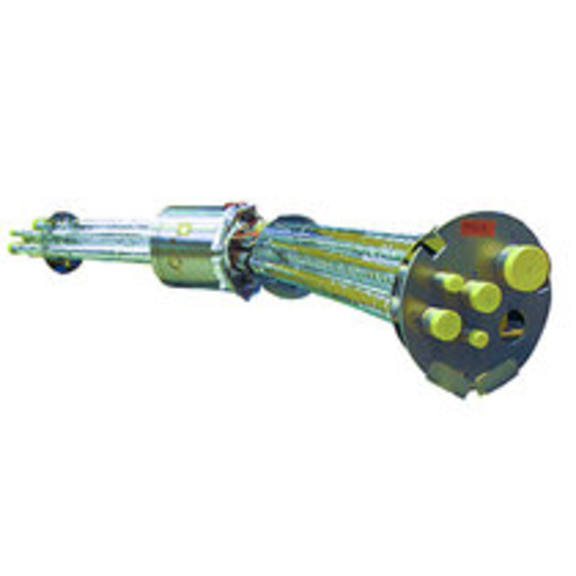Cryogenic lines
How is hydrogen or liquid helium transported and distributed over hundreds of meters or even kilometers?
Air Liquide supplied the cryogenic lines for these two key projects:
The LHC at CERN: discovering the origin of matter
The objective of the LHC particle accelerator at CERN is to reproduce the conditions that followed the original big bang. Giant collisions between protons are thus created using intense magnetic fields generated by superconducting magnets. Air Liquide achieved a world first by designing a cryogenic line that distributes the 100 tons of superfluid helium at 1.9 Kelvin required to operate the 17,000 LHC magnets. On the same route as the accelerator, the line consists of a 27 km ring divided into eight sectors, each of them connected to an 18 kW refrigerator and a cold compression system via distribution boxes, also developed by Air Liquide.
- 27 km of multi-tube cryogenic lines buried 100 m underground
- Magnetic fields 100 000 more intense than the earth’s magnetic field
- Thermal inputs of less than 0.07 W per meter
The ITER experimental reactor: mastering thermo-nuclear fusion
Controlled fusion is one of the most promising lines of carbon-free energy production. The ITER project aims to control this safe and inexhaustible energy. Electromagnets control the confinement of the fusion plasma in the reactor. As in the case of the LHC, the cryogenic lines carry cold to the magnets. They circulate the cold liquid helium from the cryogenic production plant to the reactor and then return heated helium to the factory. The ITER lines are 10 times shorter than those of the LHC but are more technically sophisticated: there are 19 types of vacuum cryogenic lines at different supply temperatures under pressures of up to 20 bars.
- 1.6 km of cryogenic lines
- 4.5 to 80 K: the temperatures of cryogenic fluids distributed
- 19 different cryogenic lines
Chronological milestones
- 1986 – Commissioning of 650 m of hydrogen transfer line in Kourou for the Ariane launcher
- 1988 – Start-up of the distribution lines of the tokamak Tore Supra in Cadarache
- 1992 – Commissioning of the ELA3 launch pad in Kourou
- 1995 – Preliminary study on the LHC QRL line
- 2001 – 100 m prototype of the QRL line
- 2002 – LHC contract won in Geneva
- 2008 – Start-up of the cryogenic plant and the helium distribution of the South Korean pilot civil nuclear fusion reactor, KSTAR
- 2014 – Acceptance of the LHC cryogenic lines at the CERN
Contact Us
For more information, find on this page your key contacts and our contact form.
Space
Air Liquide has the ambition, the will and the expertise to engage in all the major new international challenges: electric propulsion, more competitive launch vehicles, the constellation of satellites, life in space, and more.
